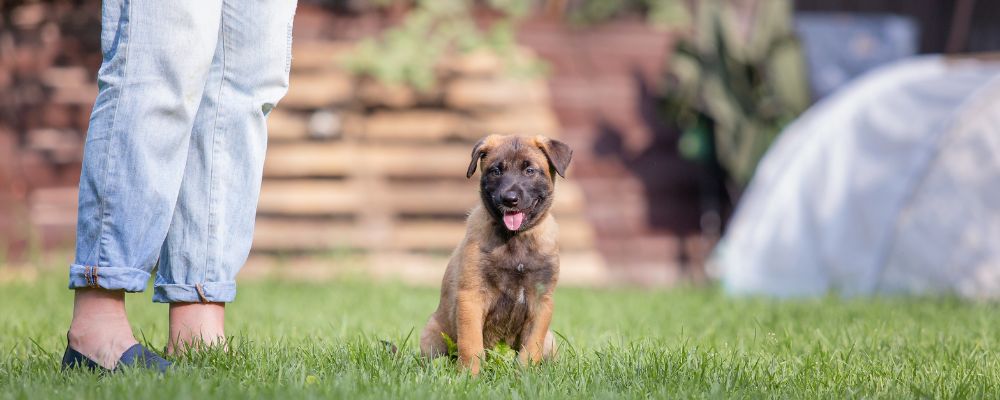Potty training your puppy is a crucial step in your journey as a pet owner. It’s about more than just teaching your puppy where & when to do their business; it’s about establishing a bond based on trust & understanding.
Whether you’re considering dog adoption or you’re a new pet owner figuring out how to potty train a puppy for the first time, it can feel like uncharted territory. However, with the right approach, you can help your puppy develop good potty habits that last a lifetime.
This guide will take you through the process of puppy potty training, with a series of steps to make potty training a positive relationship-building experience between you & your puppy.
Key Takeaways:
- Establishing a routine is crucial: Setting a consistent schedule for eating, playing, and potty breaks is essential for successful potty training.
- Designate a potty area: Choosing a specific spot for your puppy helps them understand where it’s appropriate to do their business.
- Use clear verbal cues: Consistent verbal commands delivered in an encouraging tone help your puppy understand when it’s time to do their business.
- Reward good behaviour: Using positive reinforcement in the form of rewards encourages your puppy to repeat desired behaviours, aiding in quicker learning.
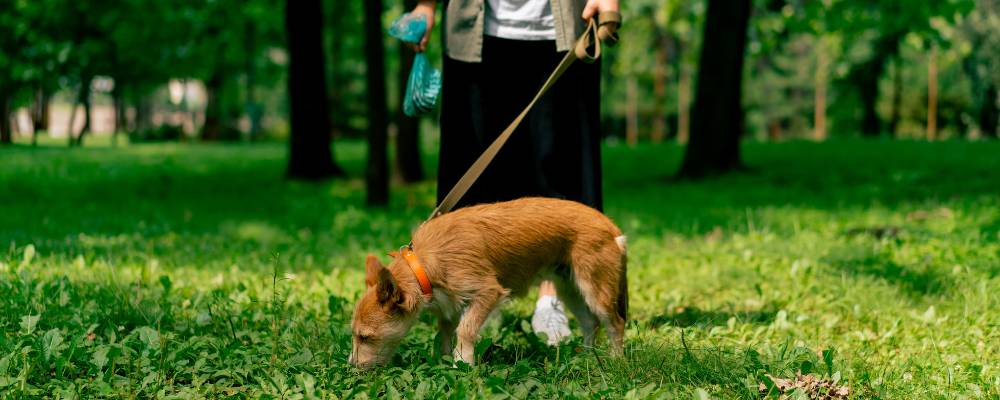
Understanding puppy potty training
Puppy potty training, a crucial part of the broader concept of house training, involves more than just teaching your puppy where & when to “go”. It’s about understanding the developmental stages of your puppy’s life & establishing positive patterns of behaviour.
Mishaps and accidents are a part of the process, but by learning to recognise your puppy’s cues, establishing a structured routine, reinforcing positive behaviours & following the other steps outlined in this guide, you can rest assured that your four-legged friend will get there!
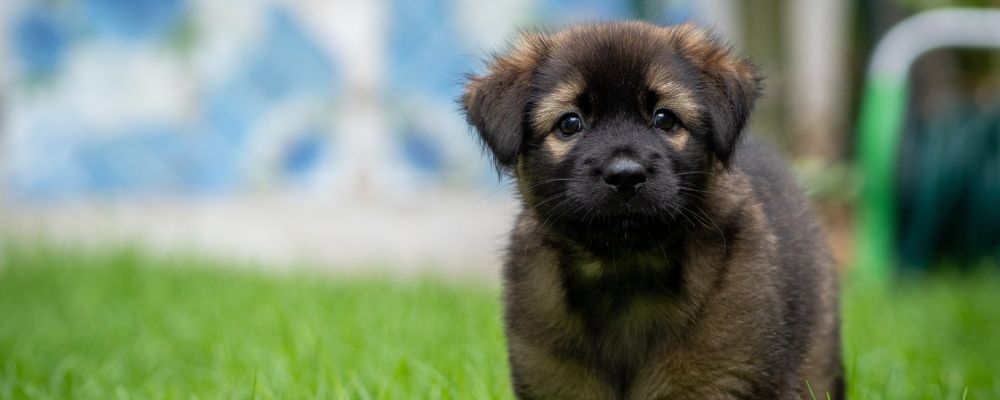
6 Steps for potty training your puppy successfully
Potty training a puppy is a process that requires dedication & understanding from an owner, & it involves specific steps that cater to the needs of a dog in its earliest stages of development.
Similar to house training or general puppy training, potty training involves building your new four-legged friend’s familiarity with a series of structured & consistent routines to enable the development of good habits.
In this section, we will outline six key steps to follow when potty training your puppy, including setting up a consistent schedule, using cue words, & trying reward-based training.
Let us help you plan your puppy’s potty training from start to finish.
Step 1: Set up a consistent schedule
Establishing a consistent schedule is the first & perhaps most crucial step in potty training your puppy. Consistency is key in helping your puppy understand & adapt to regular potty times. A structured routine not only aids in training but also provides a sense of security for your puppy. By setting specific times for eating, playing, & going outside, you help your puppy anticipate & prepare for potty breaks, which is essential for successful training.
Here’s an example of a schedule that you could adjust to fit your needs:
- Morning (6:00 AM – 8:00 AM): Wake up & immediate potty break, followed by breakfast & another potty opportunity
- Mid-morning (10:00 AM): Short potty break & some playtime
- Lunch (12:00 PM – 1:00 PM): Lunchtime followed by a potty break
- Afternoon (3:00 PM): Potty break & some more play or training time
- Dinner (5:00 PM – 6:00 PM): Dinner followed by a potty break
- Evening (8:00 PM – 9:00 PM): Last playtime or walk of the day, then a final potty break before bedtime
Of course, if you work away from home, adapting the schedule above can be challenging. You might consider employing a midday dog walker or sitter to maintain the schedule.
You may also consider finding a trustworthy dog hotel or daycare centre where your puppy can have supervised potty breaks, with some opportunities for socialisation. We encourage you to explore our related post where we cover the steps for choosing a dog hotel. If you are based in the Mother City, we also have a list of dog hotels in Cape Town for you to explore & learn about what’s included, pricing & more.
It’s important to remember that puppies can’t control their bladder until they are about 16 weeks old, & thereafter, the length of time they can control their bladder may be limited.
When setting up a potty break schedule, a general rule of thumb for how many hours your puppy can wait between potty breaks is to consider their age (in months) & add one to it. For instance, a four-month-old puppy may be able to control their bladder for about five hours (this may vary).
Consistency in timing helps reinforce where & when it is appropriate to eliminate, making it easier for your puppy to learn & for you to anticipate their needs.
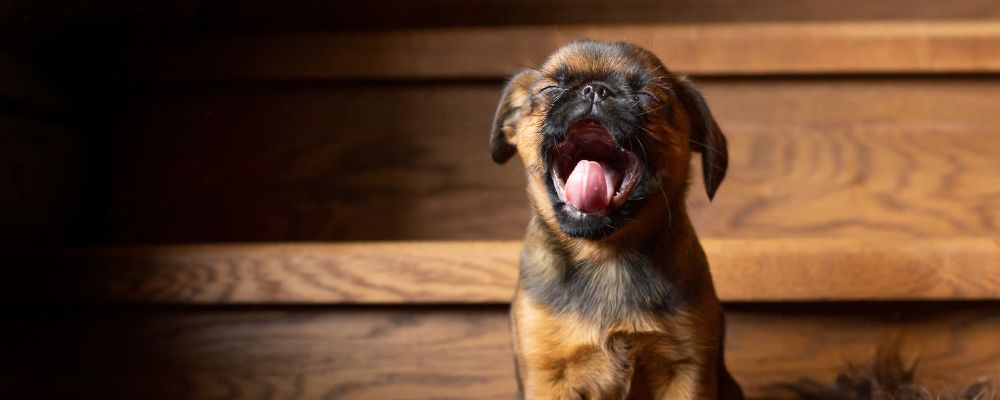
Step 2: Choose a designated potty area
This step is crucial as it helps your puppy understand where it is appropriate to do their business.
When choosing a potty area, consider a spot that is easily accessible for your puppy, & not too far from the house. This makes it easier for your puppy to reach the spot when they need to go outside, especially during the early stages of training when they can’t hold it for long.
The chosen area should be a quiet, distraction-free zone, as puppies can be easily sidetracked. Ensuring the area is clean, safe & free of debris is also important for the health & safety of your puppy.
Once you have selected the area, take your puppy to this spot each time they need to do their business. Use a specific command or cue to help your puppy associate this area with the act of elimination.
This consistency will reinforce the behaviour, making it easier for your puppy to understand & follow the training. Remember, patience is key as it might take some time for your puppy to fully grasp & get used to this new routine.
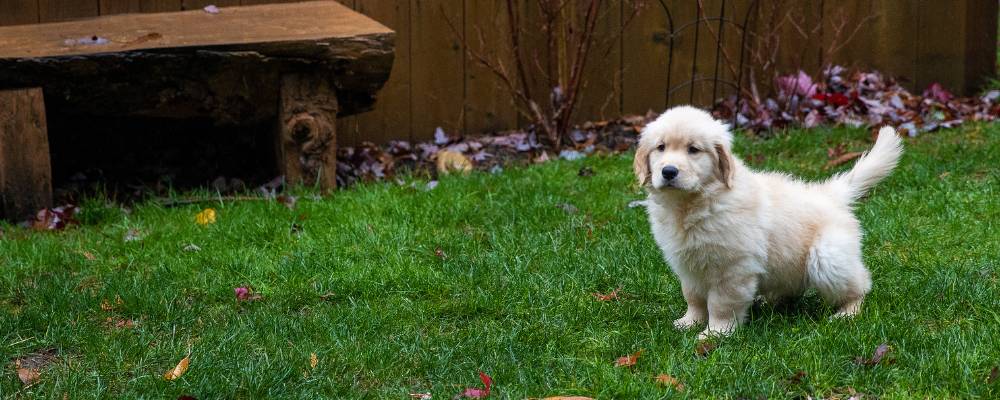
Step 3: Using cue words for potty time
Step three of potty training your puppy is using specific cue words to signal potty time.
One of the most important aspects of effective communication with your pet is the consistent use of cues. Cue words help your puppy understand what is expected of them, particularly when it’s time to go potty. By consistently using a chosen phrase or word, you create a clear association for your puppy between the cue & the action.
When selecting your cue words, opt for short, distinct phrases like “go potty” or “time to pee”. Use these words every time you take your puppy to the designated potty area. Consistency is crucial; if your puppy hears the same phrase each time they are in the area, they will begin to associate that phrase with the act of eliminating. This association is beneficial if your puppy is still learning or is easily distracted. In addition, it may be helpful to maintain an encouraging tone of voice when delivering your cues.
It’s important to start using these cue words as early as possible in the potty training process. If your puppy is just beginning their training, be patient & persistent when using your chosen commands.
Over time, your puppy will start to understand what these words mean & respond accordingly. Remember, positive reinforcement when they successfully follow the cue can significantly aid in speeding up this learning process.
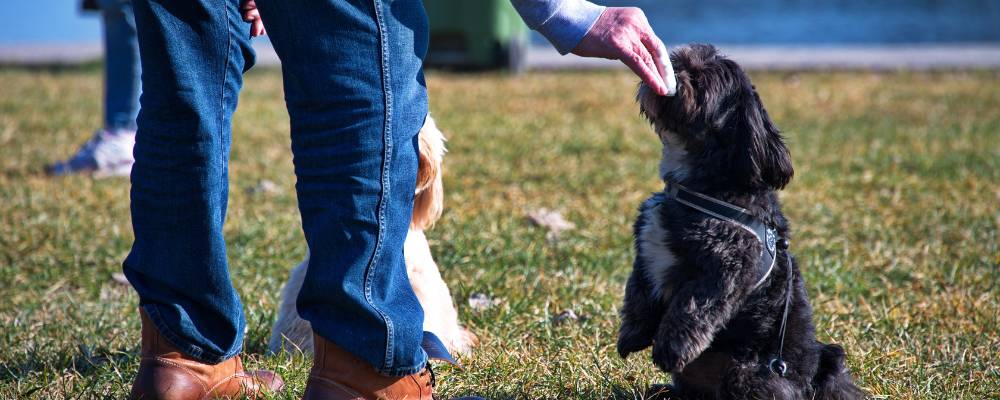
Step 4: Implement reward-based training
Positive reinforcement encourages good behaviour by rewarding your puppy for successfully taking care of their business in the designated area. Each time your puppy successfully does their business outside, reward them to reinforce the correct behaviour.
When you reward your puppy, it should be immediate, following the desired action as closely as possible. This could be in the form of a small treat, praise, or their favourite toy. The key is to ensure the reward is something your puppy finds motivating.
If you have multiple people in your household, everyone should follow the same pattern in terms of schedule, designated potty area, & rewards. This consistency helps your puppy understand & adhere to the desired behaviours more quickly.
It’s best only to reward your puppy for successfully eliminating in the appropriate area, not just for trying. This distinction helps your puppy learn the exact behaviour that earns them a reward. Over time, as your puppy grows & gains more control over their bladder & becomes more familiar with a consistent potty schedule, the need for immediate rewards will lessen, & their good habits will become second nature.
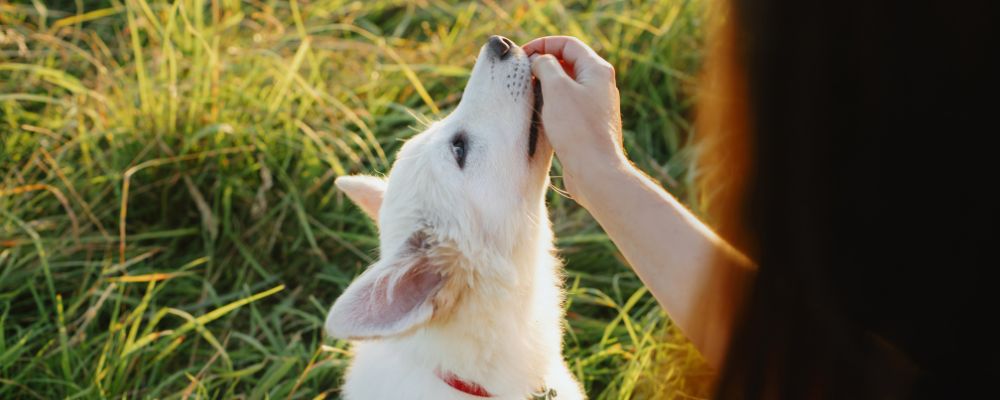
Step 5: Observe your puppy’s specific signs & signals for potty breaks
Pay close attention to your puppy’s behaviour, especially after meals, naps, & play sessions, as these are times when they’re most likely to need to go.
Puppies will often exhibit certain behaviours when they need a potty break, such as sniffing the ground, circling, whining, or sitting near the door while trying to get your attention.
Observing your puppy allows you to preemptively take them to their designated potty area, thus avoiding unwanted accidents in the house. Consistency in responding to these signals is key. When you notice your puppy exhibiting any of these signs, act promptly. Remember, patience & attentiveness during this phase are crucial as your puppy learns to communicate their needs.
Over time, you will become more attuned to your puppy’s unique signals. Recognising these cues will help you ensure timely potty breaks, prevent accidents, & reinforce good habits.
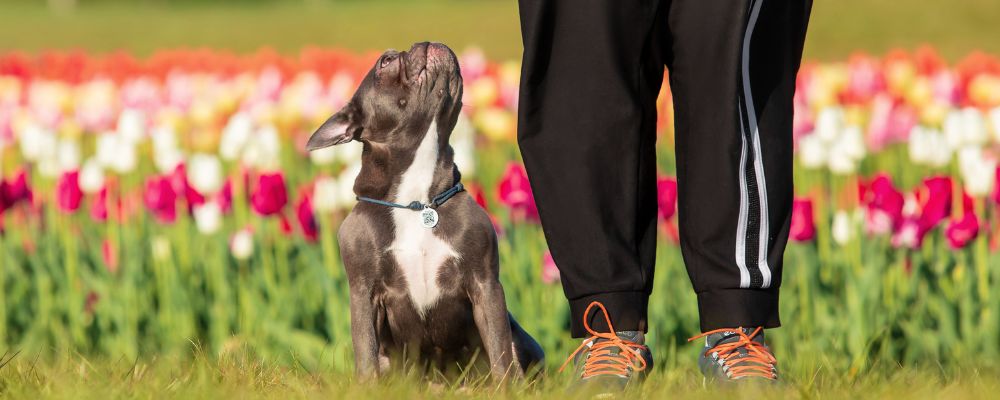
Step 6: Manage indoor accidents with patience & understanding
Despite your best efforts in potty training, indoor accidents are bound to happen, particularly in the early stages. It’s important to manage these incidents calmly & constructively. When your dog has an accident in the house, it’s not a sign of defiance; rather, it’s an indication that they either couldn’t hold it or didn’t understand where it’s appropriate to go.
Firstly, if you catch your puppy in the act, calmly interrupt them without showing anger or frustration, & immediately take them to their designated potty area. If you find an accident after the fact, it’s too late to remind your puppy of the correct behaviour. Punishing your puppy for an accident they don’t remember will only cause confusion & fear.
Cleaning up accidents thoroughly is crucial to prevent your puppy from returning to the same spot due to lingering odours. Use an enzymatic cleaner specifically designed to eliminate pet odours.
Remember, patience & consistency are key during this training phase, as each puppy learns at their own pace. With time, & by following the other steps outlined above, your puppy will soon follow a consistent routine & avoid accidents.
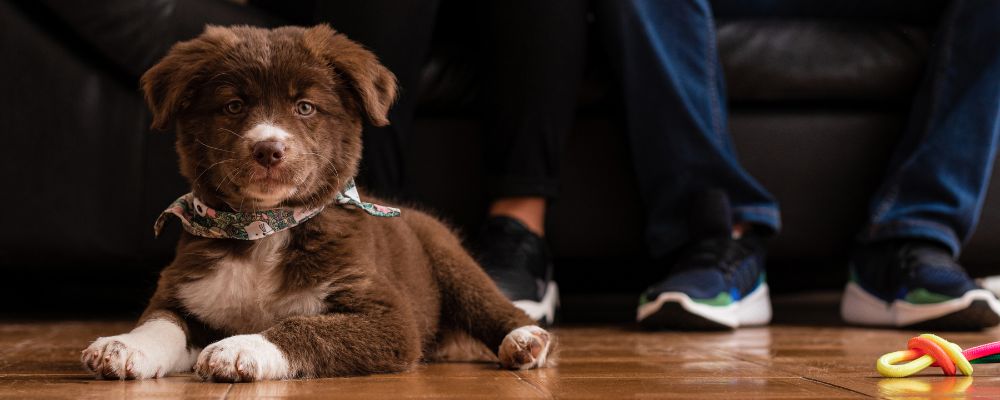
How long does it take realistically to potty train a puppy?
Potty training a puppy typically takes 4–6 months, but gaining full bladder control may take up to a year. Initially, puppies need frequent breaks & gradually learn to gain more control of their elimination patterns.
Several factors can influence the potty training timeline, including the puppy’s age, breed, & the consistency of the training routine.
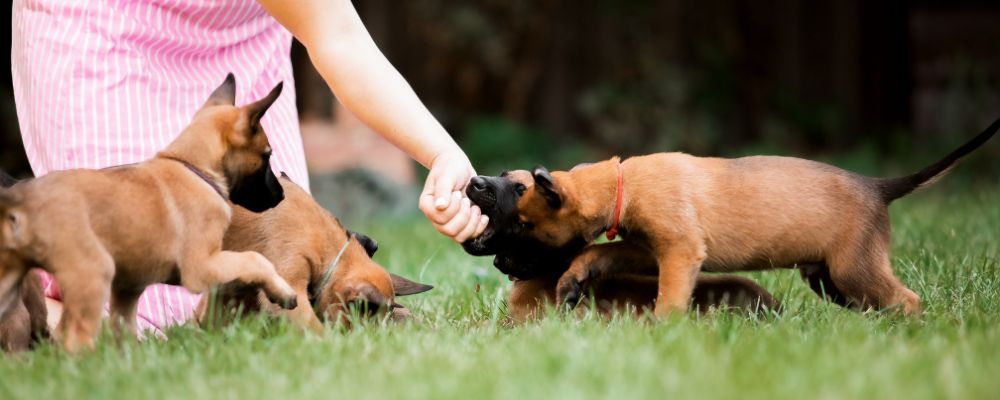
Final thoughts on potty training your puppy
In this guide, we’ve explored the essential steps to establish a successful potty training routine, from setting up a consistent schedule to choosing a designated potty area. We’ve discussed the importance of using cue words for potty time, implementing reward-based training, & recognising your puppy’s unique signs & signals for needing to go outside.
Each step is designed to build upon the last, creating a comprehensive framework to help your puppy understand where & when it’s appropriate to do their business. The acts of taking them out regularly, rewarding them for good behaviour, & managing indoor accidents with calmness & understanding are pivotal. It’s these moments that not only shape their potty habits but also strengthen the bond between you & your puppy.
Remember, some puppies may start grasping the concept within a few weeks, while others may need several months. The key is to remain patient & positive, providing consistent guidance & reinforcement. As you & your puppy navigate this learning curve together, keep in mind that the efforts you put in now will lay the groundwork for a well-trained adult dog.
If you are considering adopting a puppy, you may be looking for the steps associated with adopting a dog in South Africa, covered in our related post. We also encourage new and prospective pet owners to explore key winter pet safety tips, or learn about pet insurance, including how it works, what it covers, & more.
At MediPet, our speciality is comprehensive, transparent, & genuine insurance cover for cats & dogs. Our plans can include accidents, illnesses, & even pre-existing condition cover, depending on the plan you select. We also provide optional add-ons like routine care, benefit boosters, premium savers, & ongoing chronic care support plans to suit the needs of your four-pawed best friend.
Learn more about MediPet & why we are the right choice for your pet insurance, compare our plans & get an obligation-free quote online in just seconds today.


